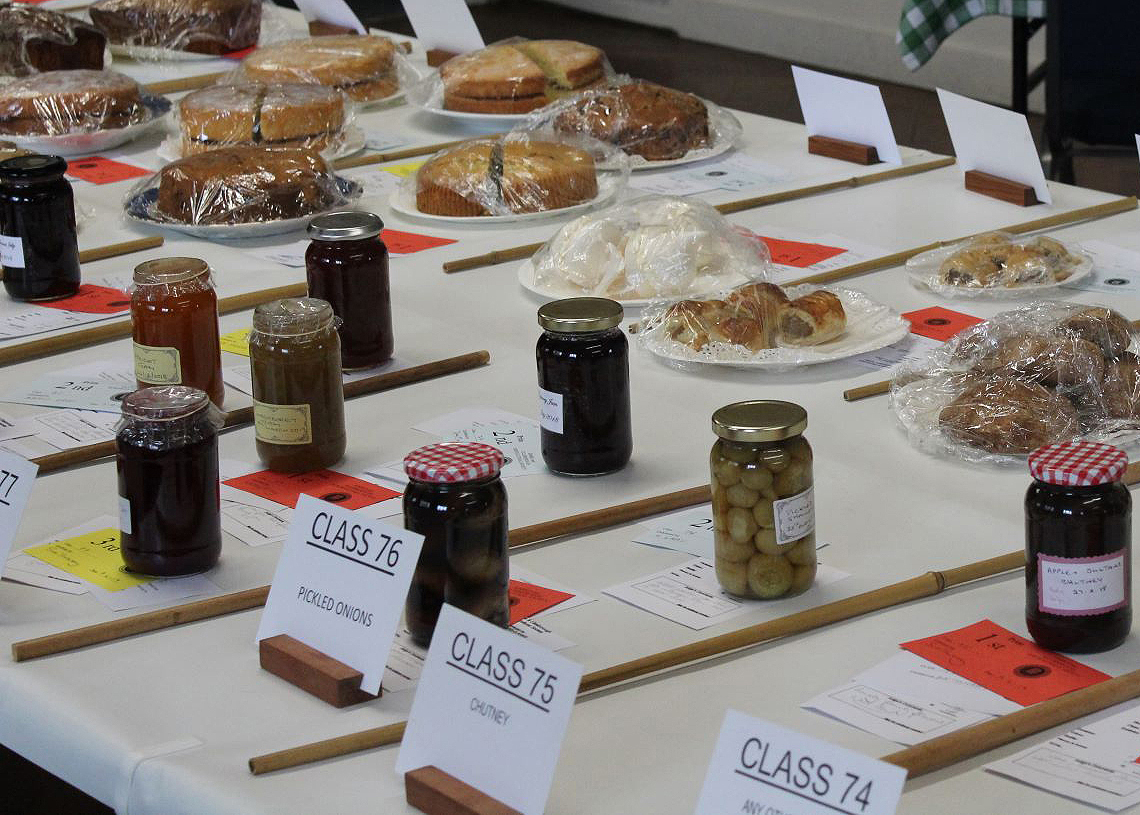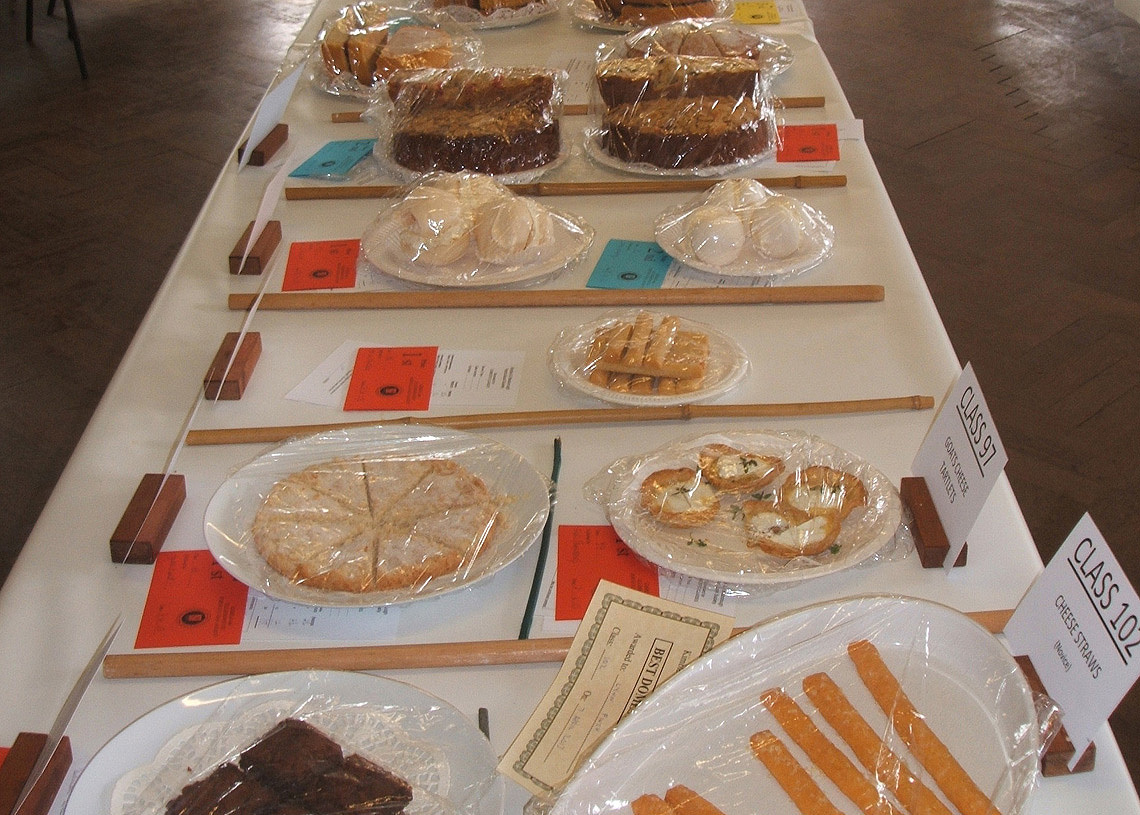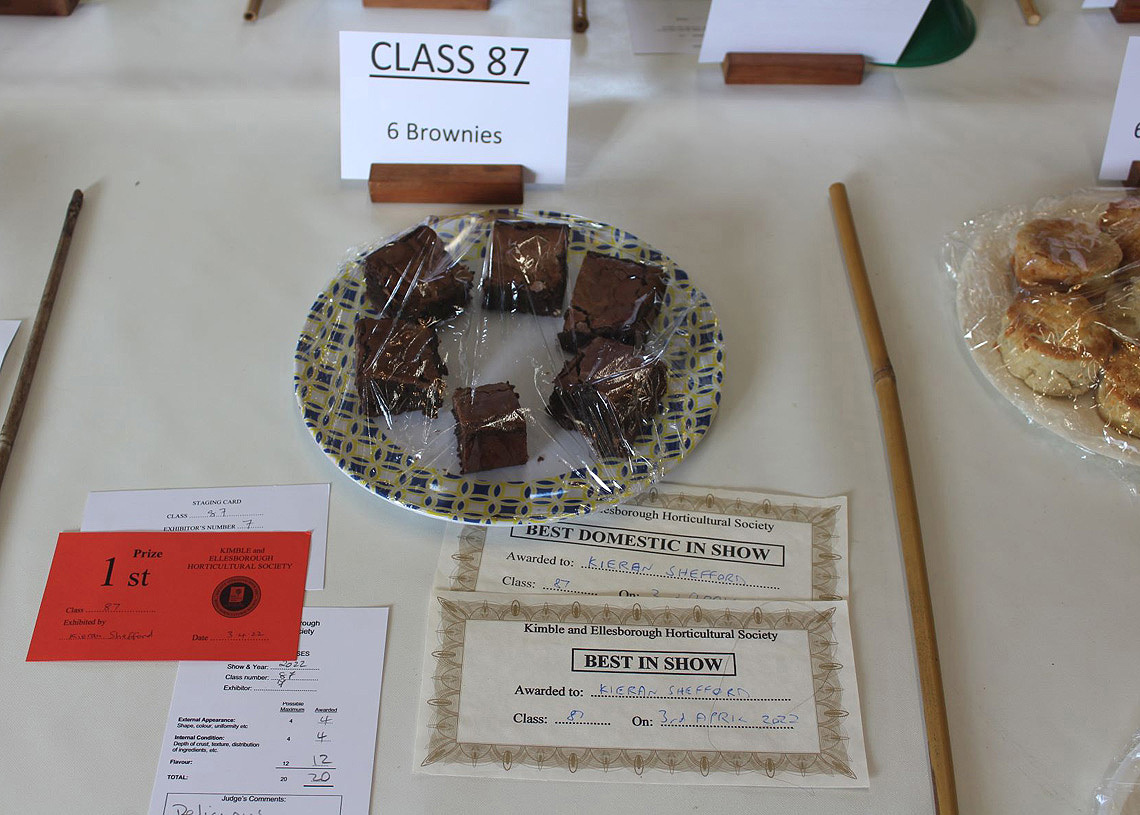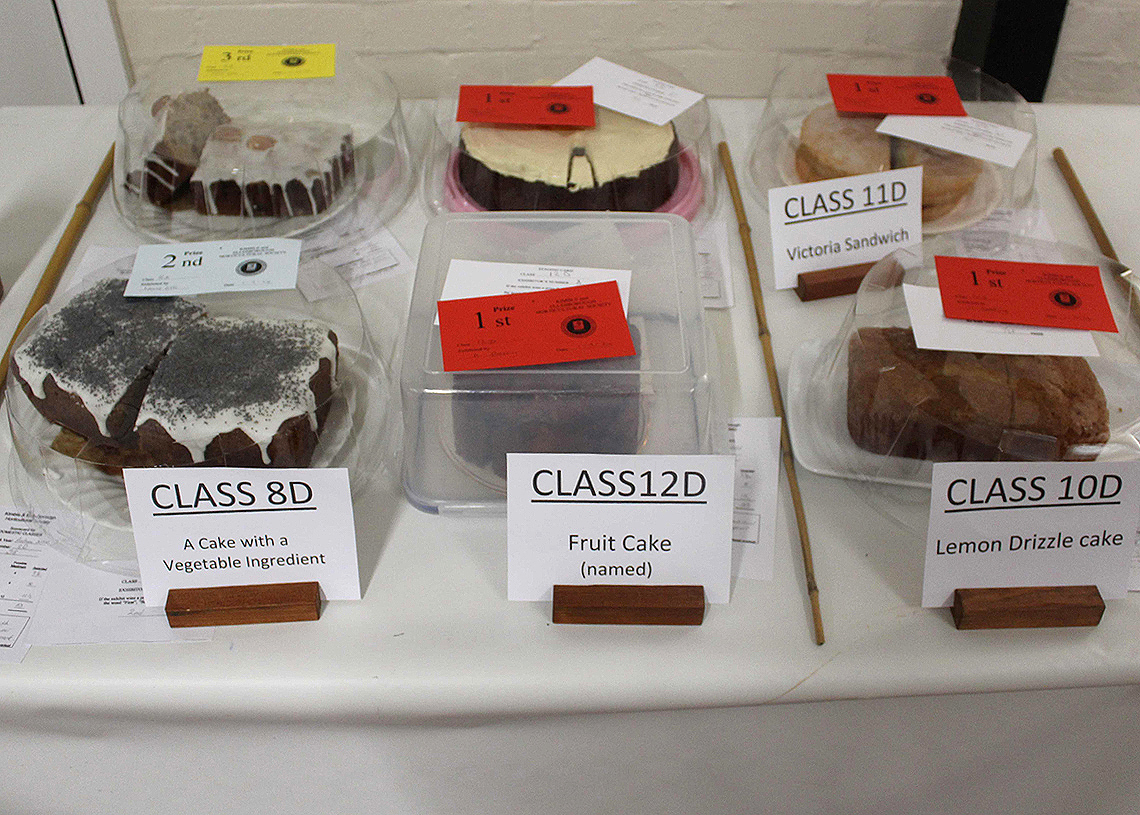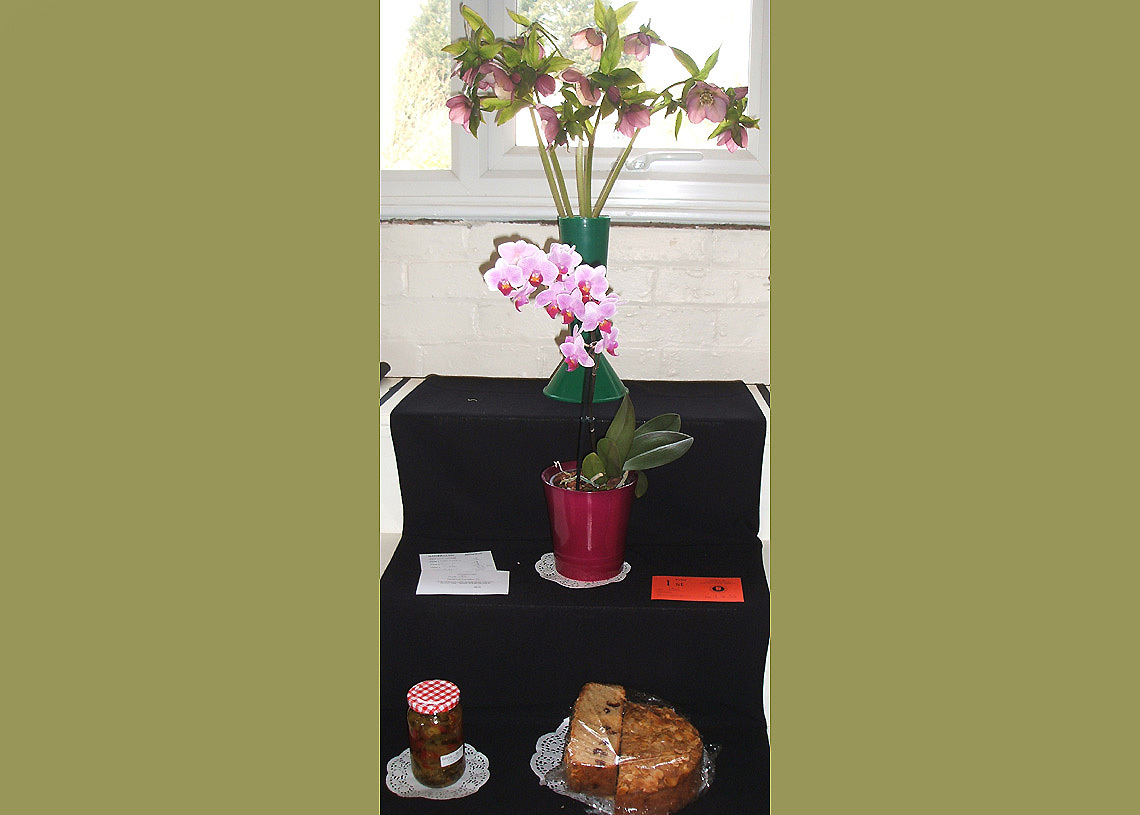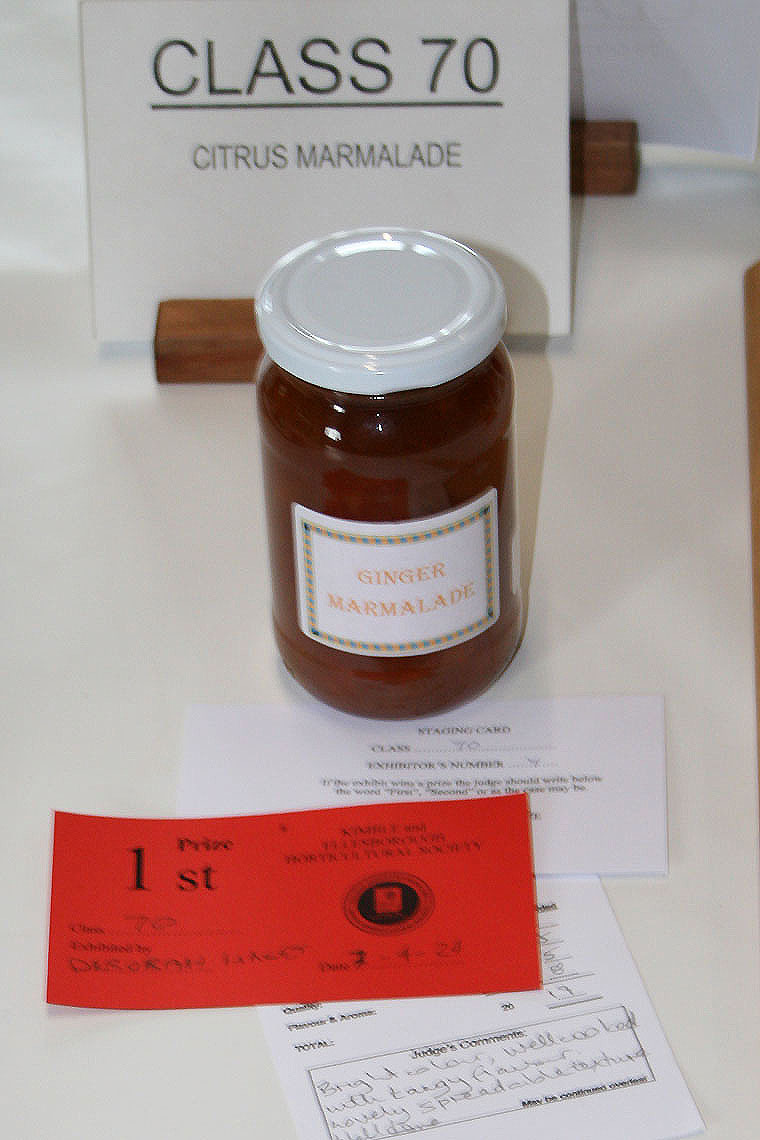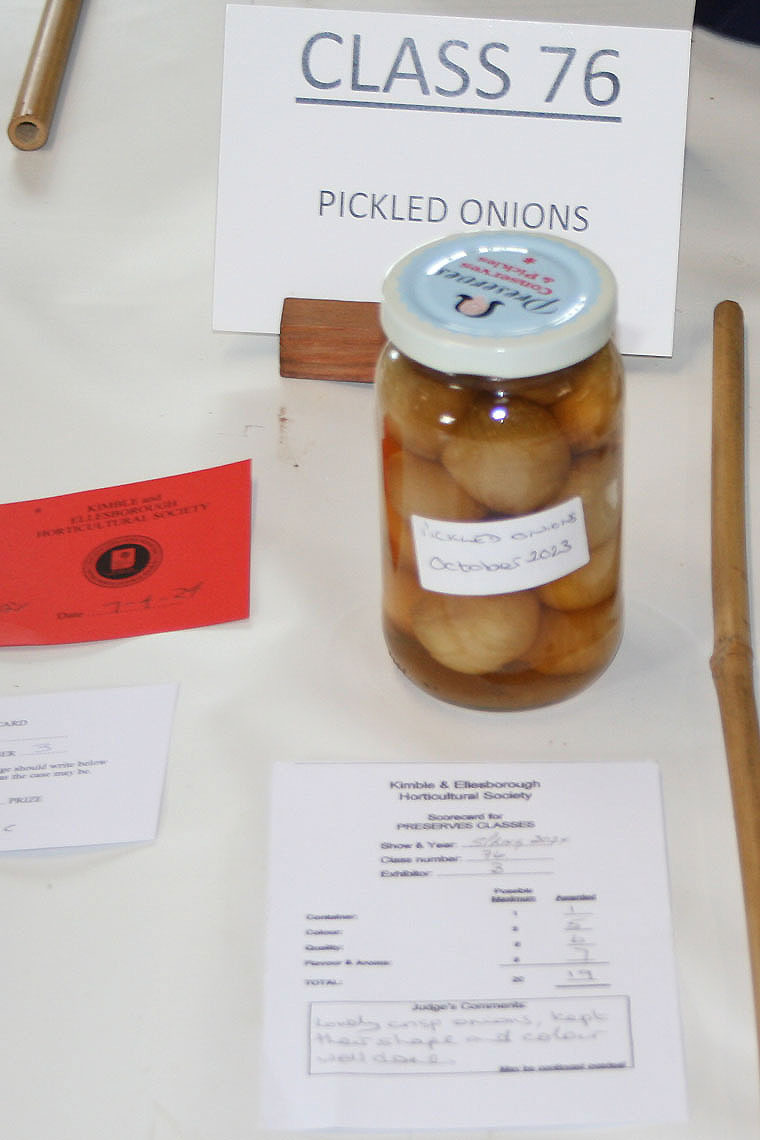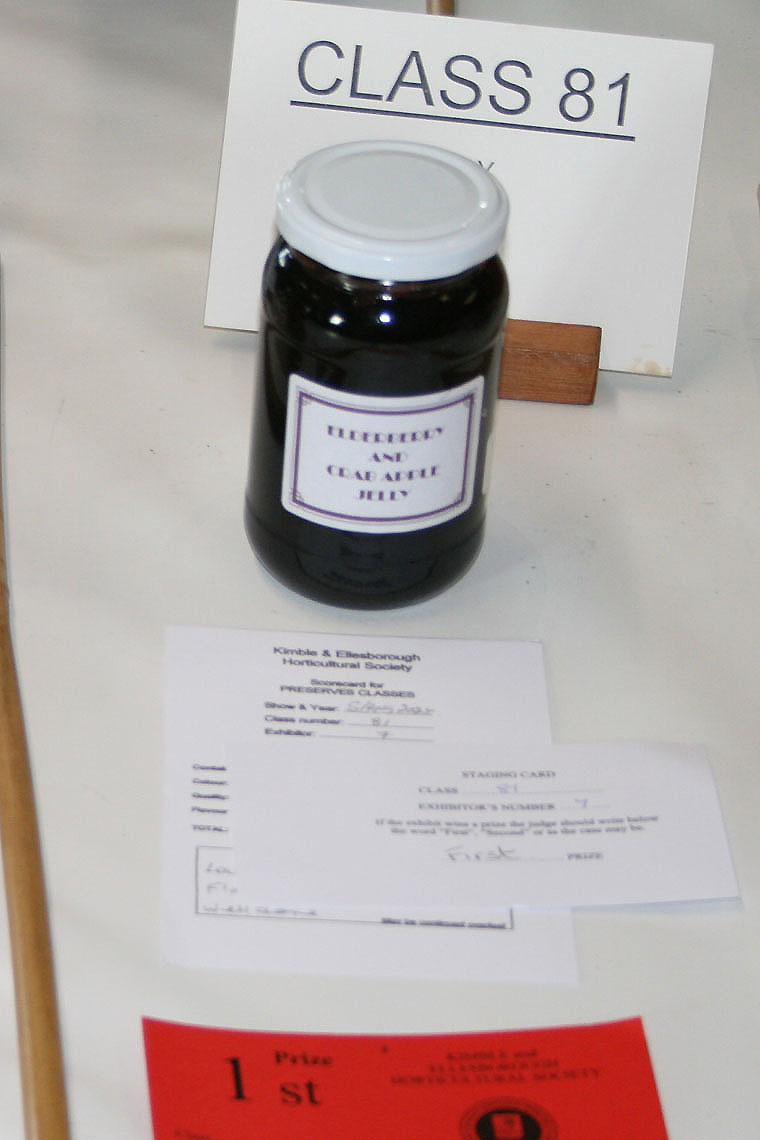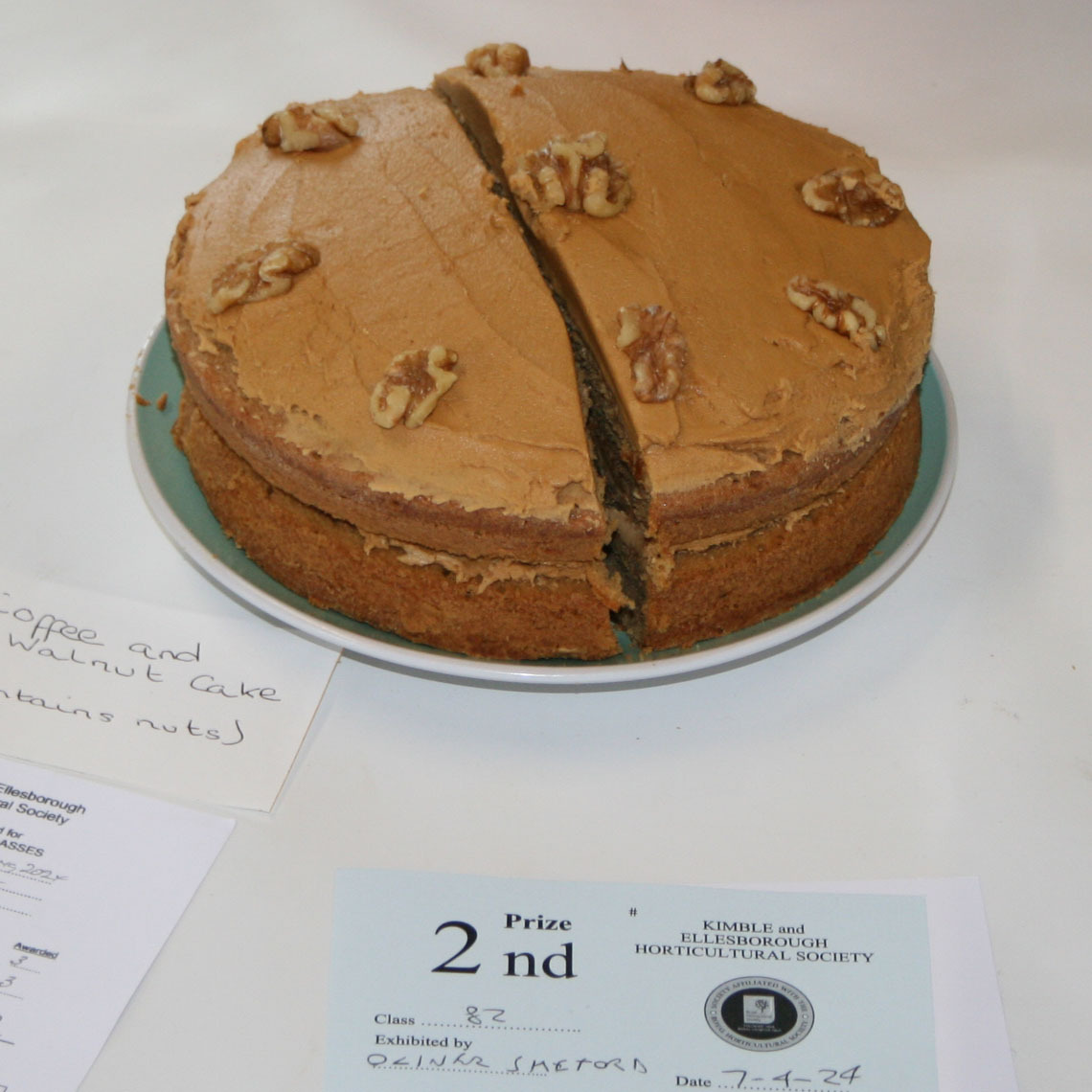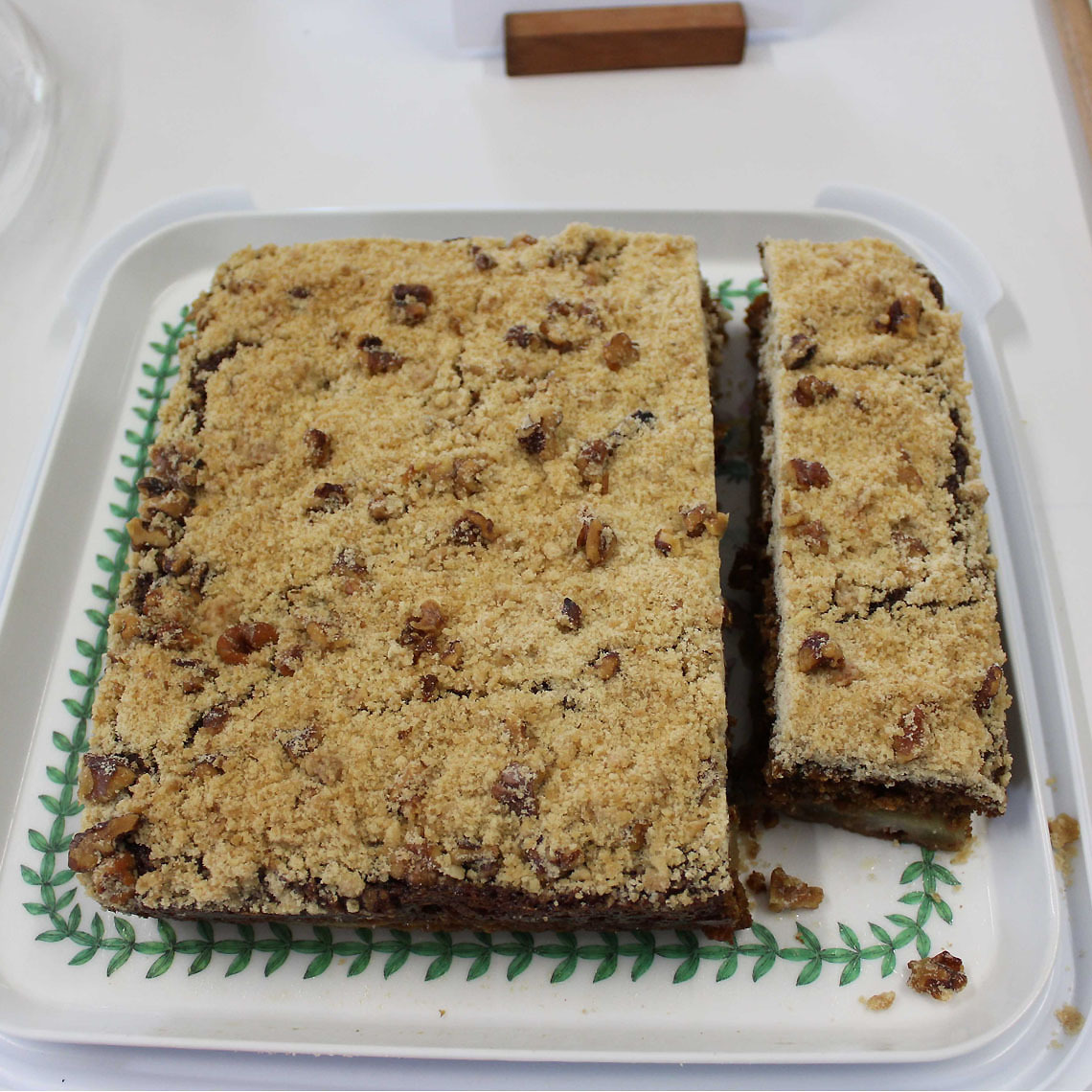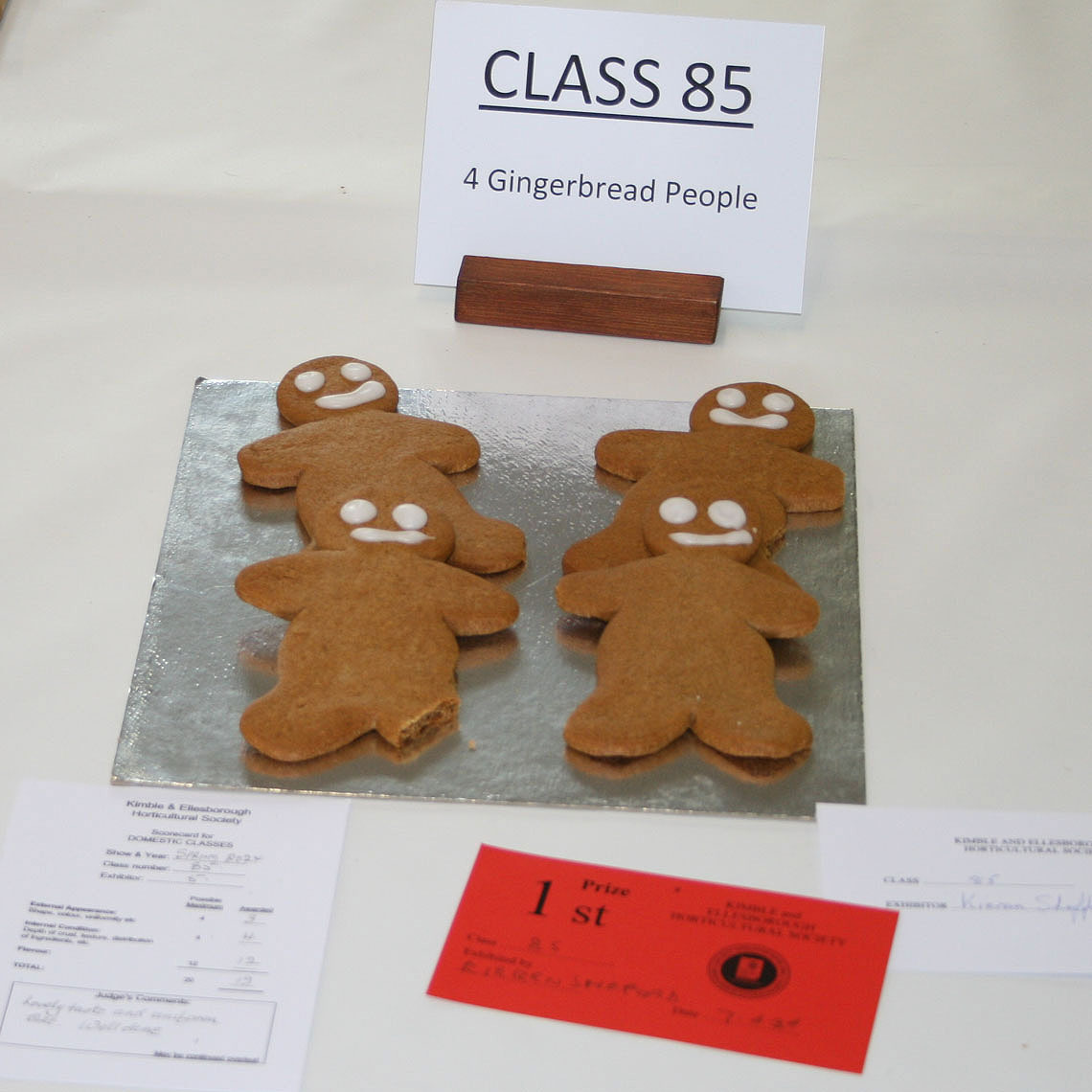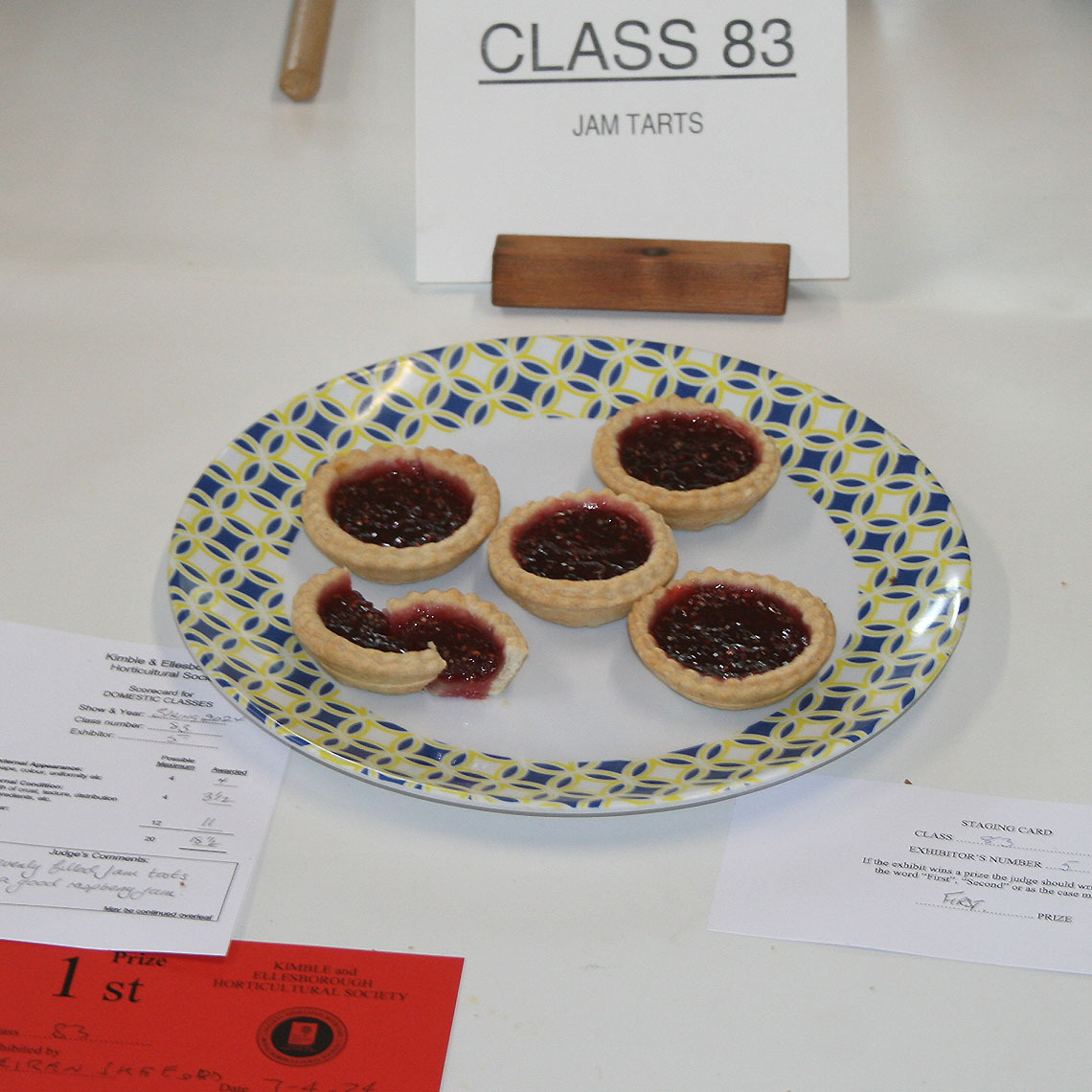Print PDF for Domestic Classes - Preserves & Baking
Our domestic classes are suitable for all levels, whether you are a novice or an experienced cook.
We also have classes for children (ages 8-14 and age 7 and under).
So, whatever your level of experience, just bring along your preserves or bakes and give it a go - you might even win Best in Show for your chocolate brownies!
Remember to check the schedule and recipes carefully to make sure that you note all the instructions such as the correct cake tin or jar size and any presentation requirements. You don’t want to risk losing points for avoidable errors!
The judges will award points based on the WI system. The scale should be used as a guide to the relative importance of the features of an exhibit.
Preserves
Scale of Points
|
In a class for preserves: |
Points |
|
Container |
1 |
|
Colour |
5 |
|
Quality |
6 |
|
Flavour and Aroma |
8 |
|
Total |
20 |
General Rules and Tips for Preserves
Jars and Labelling:
Check if the size of the jar is stipulated. If not, choose the most appropriate size for the contents. Jam, marmalade and chutney can be presented in 1lb (454g) or 12oz (360g) jars. It is recommended that jelly and lemon curd are presented in 8oz (227g) jars. A half pound jar of jam or jelly in a class asking for a 1lb jar, would be disqualified.
There should not be any brand names on the jars or lids. Old commercial labels must be removed.
New metal lids or cellophane tops with a wax disc on top of the preserve can be used to seal the jars. Jars should be filled to within an eighth of an inch of the top and the lids put on whilst still hot, to produce a vacuum, and the judge will test for this.
Jars must be properly labelled. Labels should be clearly marked with the type of jam or jelly and the date of making. They should be stuck on straight, about ¾ of the way down the jar.
Ensure the jars are clean without any stickiness or fingerprints.
Tips for Good Preserves:
All contents should be bright and of good colour.
Jellies: these must be sparkling clear and well set, though never stiff.
Jams: a good jam will have an even distribution of fruit. To ensure this, cool the jam for five minutes after setting point is reached, then stir it before potting into jars.
For show work commercial additives to help the “set” will show up in an added sweetness and the entry may be disqualified. After all, the object of show work is to display one’s own skills.
Chutneys: we recommend they should have been made at least 3 months before exhibiting in order to give the preserve time to mature and develop its flavour.
Lemon curd: this is a conserve (not a preserve) so it should ideally be made within a few days of the show but it should not be made more than 2 weeks before the show as it deteriorates quickly. Prize winning lemon curd should be set but not curdled, have a good fresh lemon flavour and not too much sweetness. Cover the same as jam.
The judge will sample the preserves to check the consistency and taste.
Baking
Scale of Points
|
In a class for baking: |
Points |
|
External appearance |
4 |
|
Internal Condition |
4 |
|
Flavour |
12 |
|
Total |
20 |
External Appearance: The judge will be looking at shape, colour, uniformity etc
Internal Condition: Depth of crust, texture, distribution of ingredients etc are important considerations
Flavour: up to 12 points are available, showing the importance of a good balance of flavours.
The judge usually cuts the cake to check the texture and quality, for example fruit or jam distribution if relevant, and then tastes it.
General Rules and Tips for Baking Classes
Check the recipe, for example to make sure you have the right size and shape of cake tin or cutters.
Make sure you follow all the steps of a set recipe and note any instructions re decoration or presentation.
In general, cakes etc can be neatly presented on either a china or paper plate. White plates are recommended as they help set off the bake. A doily may be added if you wish.
All cakes, pastries etc should be covered. Plastic covers for cakes are available to borrow for the duration of the show, please ask a member of the Show Committee. Cling film should be provided by the exhibitor and should cover other items.
Cakes: All cakes should be of good shape, with an even rise. A slight peak is allowed in fruit cake, which may also show a slight crack in its top, though it is better without.
All cakes must be of an even texture and good flavour, light and moist. The Judge will cut them to see.
Caster sugar will be expected on top of a Victoria sandwich, which should have jam (not a butter cream) filling.
Scones: Scones must not be buttered and are best about an inch thick, well risen and of an overall golden brown colour.
Meringues: Individual meringues should not show colour at all, but sweet meringue pies are allowed to have a slight tinge.
Tarts: Pastry for tartlets is expected to be of an even thickness. The judge will check the tart is cooked right through. Jam should be cooked in with the pastry, not added afterwards. Cut the pastry for sweet tarts with a fluted cutter, but use a plain one for savouries.
Biscuits: The same applies for biscuits. Biscuits should be of thin and even size and texture. They must be crisp right through.
Cheese Straws: Cheese straws of perfectly even size, slender and about three inches long, crisp, but not over cooked, are ideal.
Useful Source of Information
Great British Village Show - Royal Horticultural Society
Please note that we use the WI system, not the RHS system, but this book has lots of useful tips on achieving a good preserve or bake, on presentation and on what judges will be looking for.

